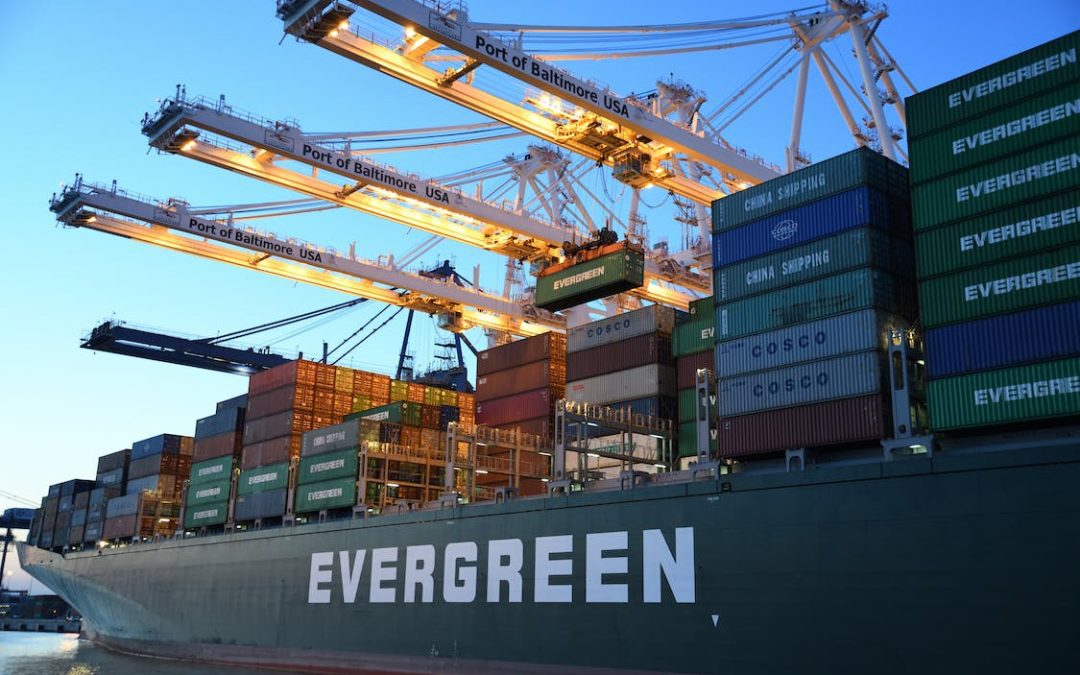Knowing which container to request from your sea freight company isn’t always the easiest decision — nor is it one that should be taken lightly. If you go for the wrong container, it can result in frustrating delays or damage to your goods. Choosing the right shipping container is particularly important if you deal with goods that need specific conditions — such as refrigeration.
By familiarising yourself with the main types of ocean freight containers, it should be much more straightforward to find the solution to your international freight forwarding needs.
Types of shipping containers for international freight forwarding
So, what are your options?
Dry van containers
Dry van containers are the most standard form. Made from steel in various sizes, they’re suitable for the vast majority of commodities, such as cartons, bundles and boxes.
High cube containers
High cube containers are very similar to dry van containers — just around a foot taller with a higher volume capacity. This means they can store taller items, such as certain household furniture. The extra height can also facilitate extra ventilation or even an air conditioning unit, so they’re sometimes used for sensitive equipment, too.
Flat rack containers
Made from large metal frames secured to the deck of the ship, flat rack containers are a lot more adaptable to oversized or oddly shaped cargo. That could be engines, wind turbines or heavy construction equipment. These containers can be fitted with doors, walls or covers to accommodate these more challenging shapes and sizes.
Open top containers
If the cargo exceeds the capacity of a dry van container but isn’t quite large enough for a high cube, an open top container can be a good middle ground. Examples could be lumber, sheet glass or machinery. The top is covered with tarpaulin to protect its contents against the elements, meaning it’s another option for cargo that requires ventilation, such as hazardous materials.
Reefer containers
Otherwise known as a refrigerated container, this is the only option for goods that need to be chilled or frozen. This covers the majority of perishable foodstuffs, plus pharmaceuticals and more. The internal refrigeration unit can be adjusted to maintain the temperature required by the contents of the container.
Open-side containers
Open-side containers feature full-length doors on one or both sides, allowing easy access to the cargo from multiple directions. These containers are ideal for items that require frequent loading and unloading or those that benefit from increased accessibility, for example, awkward or heavy cargo that needs to be shifted with extra equipment.
Insulated containers
Insulated containers are designed to provide thermal protection for temperature-sensitive cargo. They feature enhanced insulation properties, helping to maintain a consistent temperature within the container, regardless of external conditions. This type of container is often used for transporting goods such as pharmaceuticals, chemicals, or electronics that require strict temperature control.
Flatbed containers
For oversized cargo that exceeds the dimensions of standard containers, flatbed containers offer a viable solution. These containers lack side walls and a roof, allowing for easy loading and unloading of goods from the sides or the top. They are commonly used for transporting heavy machinery, large vehicles, or construction materials.
Tank containers
These metal containers are lined with rubber, plastic or other impermeable material to safely transport liquids and gases that are often hazardous, like crude oil and chemicals. Most of the time, tank containers are much larger than other containers.
Tunnel containers
These dry freight containers have a set of doors at each end for added ease when loading and unloading. They’re also often fitted with extra locks and an additional layer of metal, meaning they double up as a security system. This makes them the most common container of choice for high-risk shipments — for example, cash or precious metals.
By understanding the diverse range of container options available, you can make an informed decision based on the specific needs of your cargo. Selecting the right container ensures not only the safety and integrity of your goods but also smooth and efficient shipping operations. But if you’re still unsure, we can help.
At KMB Shipping, we can ensure your items arrive at the perfect temperature. We use cold packs, chilled boxes and other specialised containers to keep your goods safe and fresh.
Sea freight logistics from KMB Shipping
If you’re still in doubt about which shipping container to use for your sea freight, don’t hesitate to contact KMB Shipping Group. As your Birmingham shipping company, we’re able to assist with all kinds of sea freight logistics. We can handle both Full Container Loads (FCL) and Less Than Container Loads (LCL).
Get in touch to request a quote today and we’ll help make the complex, simple.

